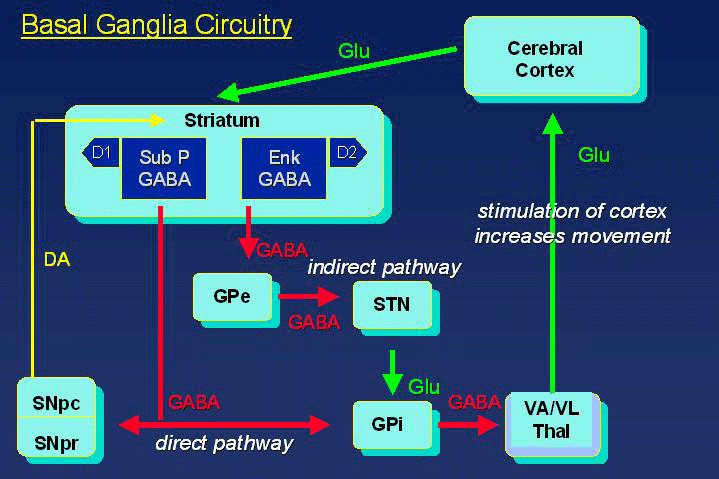a

b

c

| Figure 1. | |
|
a
|
 |
|
b
|
 |
|
c
|
 |
| Schematic representation of basal ganglia circuitry and relationship to Huntington’s disease. Excitatory pathways use glutamate and are represented as green arrow. Inhibitory pathways use GABA and are represented in red. (a) Normal basal ganglia circuitry demonstrating the "direct" and "indirect" pathways by which the striatum influences the thalamus and substantia nigra. (b) Early Huntington’s disease is characterized by loss of the projection neurons of the indirect pathway. The net result is relative disinhibition of the thalamus, which in turn excites the cortex, producing hyperkinesia—an increase in movements. (c) In later stages of Huntington’s disease, all projection neurons degenerate, as well as cortical neurons, resulting in a relatively hypokinetic state. | |
published 2000